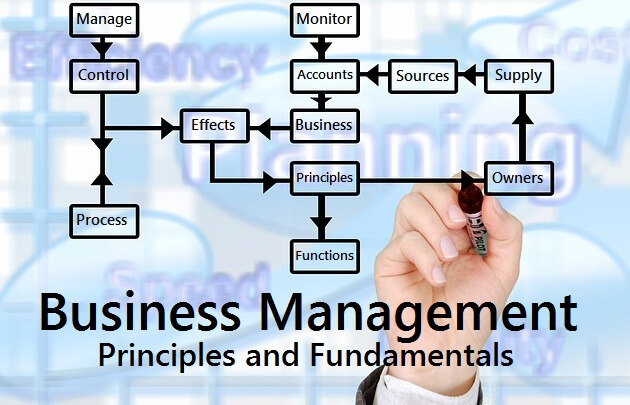An entrepreneur may feel that they must specialize in learning. In business, it can feel like a necessity to constantly outlearn the competition. In a previous blog post, we gave entrepreneurs tools to help them learn faster in order to help accomplish that goal. However, while new learning tools are one method of improving learning speed, adapting learning concepts and principles may help just as much. Each the mental tricks shown below may be able to improve the quantity or quality of learning done every day.

9 Steps To Speed Up Your Learning
In order to gain the most out of learning, it may be wise to have a structured approach for getting the most out of each learning session. As an example here are a few steps based on principles taught by Josh Kaufman in his book The First 20 hours: How to Learn Anything… Fast.
- Skim or read the summary of multiple sources and see which concepts come up in multiple sources, and make a judgment call which three or four sources will be the best source.
- Commit to trying something beyond your current abilities in a low-stakes environment. This either confirms that you already know enough or reveals any mistakes and shows what needs to be improved. Any confusion you feel can effectively point you to the thing you need to learn next.
- Identify mental models and mental hooks present in the text. Mental models are ideas, concepts, and techniques that come up over and over again. Mental hooks are analogies and metaphors useful to you in order to gain an immediate understanding of the current situation.
- Imagine the worst case scenarios when performing a skill and plan for them. When experimenting with something new, some failure is likely. Preventing failure or doing damage control may be more useful as a beginner since failure is more likely. Think about ways you can fail and what can be done to prevent that.
- Try to find a reliable benchmark to set up realistic expectations for yourself. If possible, contact practitioners to establish a baseline performance, as well as a performance goal, and judge how much effort it will take to meet your learning goals.
- Eliminate distractions in the environment and time the study sessions in order to treat being focused as the challenge that it is.
- Use spaced repetition (from flash cards or programs like Anki) can keep information in your memory.
- Create a pre-learning routine, such as creating a checklist and unplugging your router before you start a learning session to prevent being distracted by the internet, maybe a successful way to get started. Even an arbitrary ritual, such as turning on a lamp before you start, can help to develop a sense of commitment before beginning learning session.
- Take breaks after specific timed intervals. A human body may only be able to handle 90 minutes of engagement at a time. Some even believe 25 minutes of engagement followed by a 5-minute break is essential. Don’t push it, and remember to take regular breaks and get plenty of sleep.

Start with a Summary
If a book or document contains useful information, it may be wise to read up on a review, summary, or report of the material before reading the text. The information contained within the summary may be enough, making any continued reading of the text un-necessary.
If there are no easy-to-find summaries or reports, skimming the information may suffice.
When skimming new pieces of information, it may be wise to focus on the following things:
- The point of each chapter is usually expressed in the first and last part of each chapter. This may be all the information that’s necessary.
- Only the names, dates, numbers, formula, and named concepts are important unless there’s something that’s obviously missing.
- The table of contents, index, or last page in a chapter may contain all the information that you need. Examine them before reading anything else and see if you can figure out the text from there.

Make a Hypothesis
Before you begin reading, watching, or learning in any other way, it may be wise to make a hypothesis about what material will be covered. Part of this hypothesis will be a guess as to why the material is important, and a statement of what you hope to learn from what you are reading. This hypothesis might force you to review your reasoning and decide how much you already know. After you begin reading you may be more acutely aware of the differences between what you assumed and what is presented.
Without making a hypothesis, you might glaze over the text or imitate it without thinking. By making a hypothesis you can skim sections that you already know and pay closer attention to any information that disagrees or improves upon your initial assumptions. In this way, you may be able to save time or improve your own focus by identifying what you do not understand and focus on that.

Improve Your Memory
None of this learning is going to do much good if you forget what you learned. Luckily, there are a few easy ways to increase memorization rate without using a flash card. The key is imagining vivid, emotional, provoking images and connecting those to the things someone wants to remember. Humans tend to remember images best, and they remember emotional, moving images that evoke all the senses best. Because of this, it may be wise to take a breather after every page or chapter and come up with an imagined image for what transpired in the text.
In conversations, imagining a series of static 3D shapes instead of animated or elaborate symbols may be necessary since the imagining needs to be done quickly to avoid becoming distracted. however, after finishing the conversation a person can always develop the imagined image further. They can do this by mentally animating the various images together to show a connection, or by adding different senses (such as deciding how it smells, how it sounds, etc.) to may make it easier to recall the concepts later. As an example: a person could imagine the moon refusing a stinky piece of cheese in order to remember “The moon is not made of cheese.”
In order to memorize numbers, it may be better to convert them into symbols using the Major system or some other mnemonic system. This system converts certain letters into numbers. With the Major system, characters or actions can be translated into an image. MooNwaLKiNG, for example, could be the number 321727.
For longer stretches of information, many memory champions use a method known as the mind palace or the method of loci to memorize more information. To use the technique a person must imagine themselves traveling through a place they regularly visit and fill the location with conceptual images that they hope to recall. As the person travels around the space, the things that they are trying to imagine begin interacting in a way which elaborates and embellishes the memory.
As an example:
Someone said to me:
“Nearly half of all rainforests are being cut in order to build highways. To prevent the destruction of rainforests, we will need to get all government agencies involved.”
In order to memorize this sentence, I imagined myself waking up surrounded by trees. As I got up all of the trees were suddenly cut in half around me. As I walked towards my restroom to brush my teeth I saw the cut trees were forming a highway. When I got to the restroom, I turned to see that agents from the FBI, CIA, and city hall had appeared and tried to spear the highway with flags that showed the symbols of their various organizations. They found the highway unstoppable until the president appeared with every agency in the government and all the agencies combined to form a giant robot which wrestled and pinned the highway to the ground.
This imagined scene created a memorable series of images to refer back to. If I wished I could have used different parts of the house as part of my morning routine in order to remember a more complex statement.
We hope that these learning tricks help a business owner learn whatever they need as quickly as they need to. Let us know in the comments if you have any other tools for learning quickly and memorizing new information in the com




